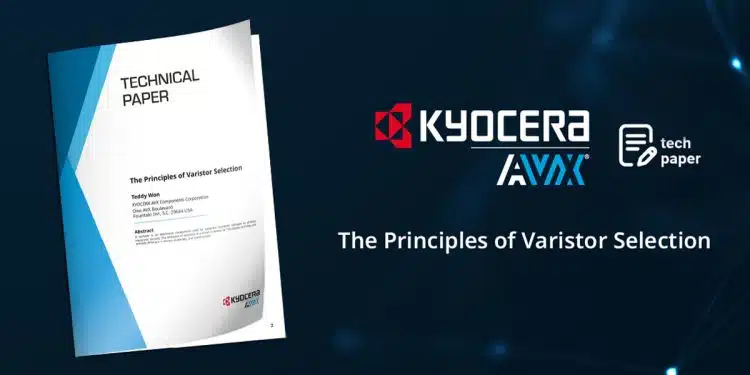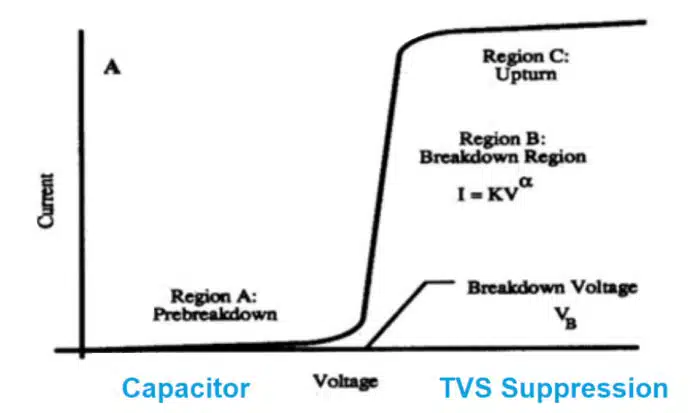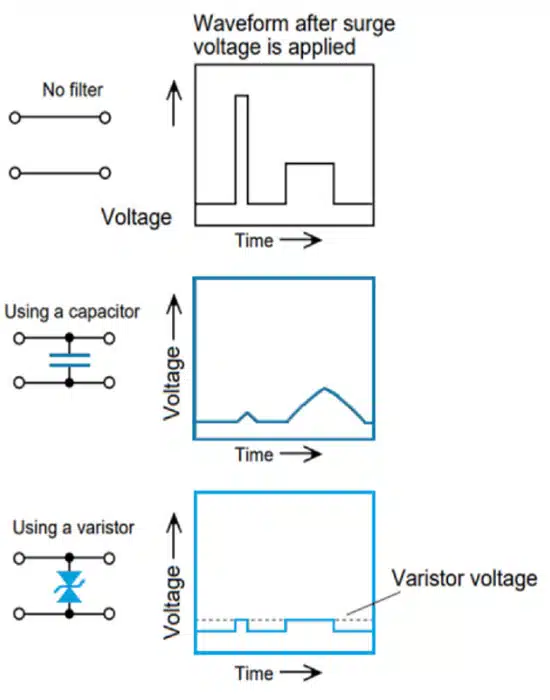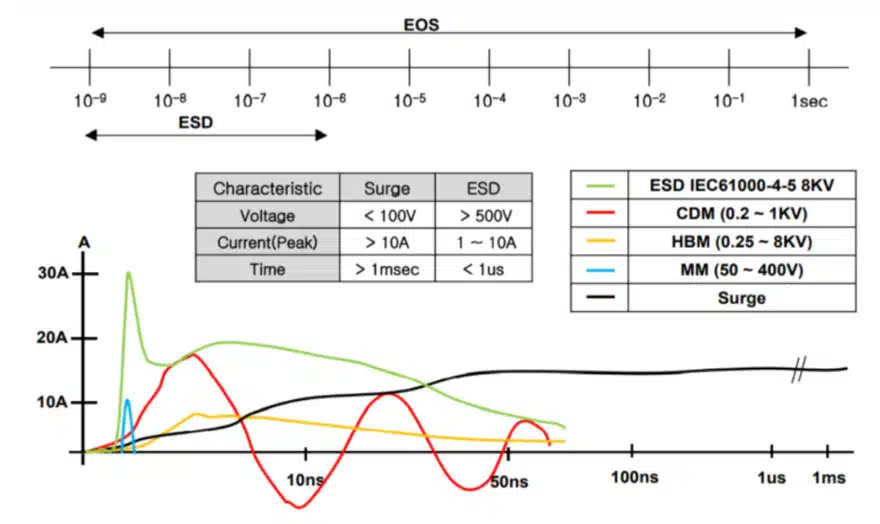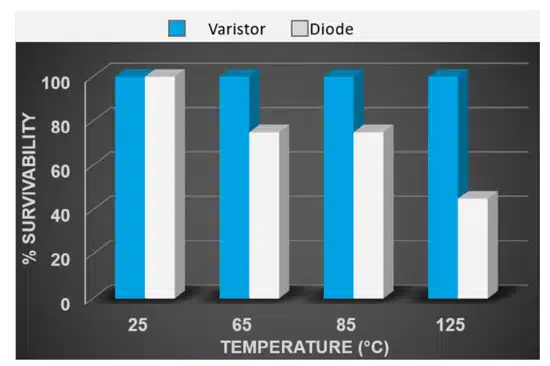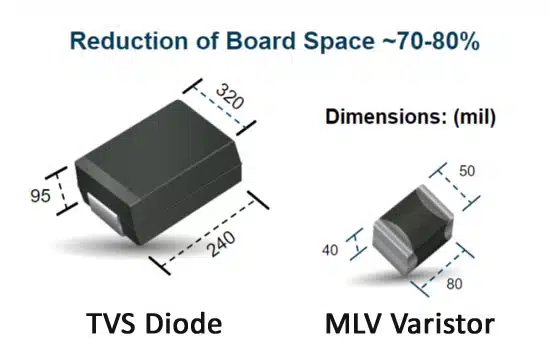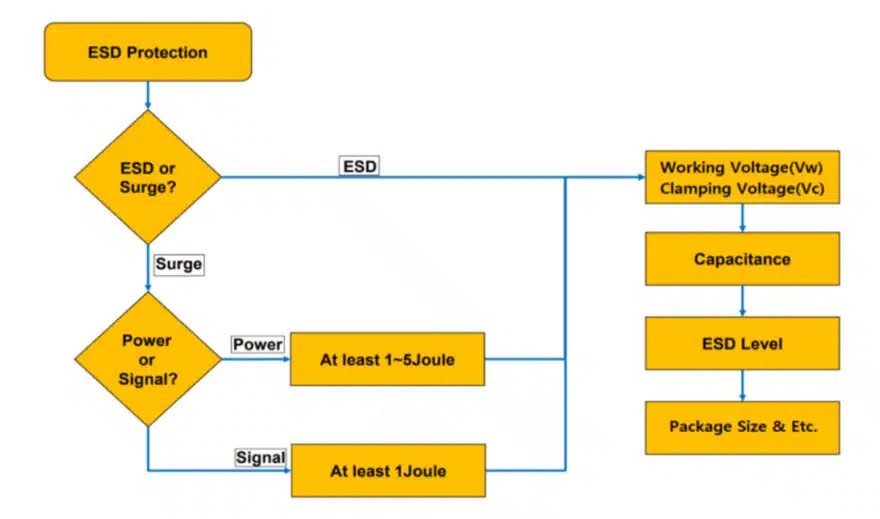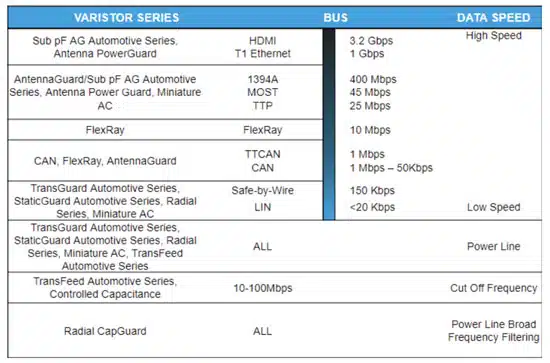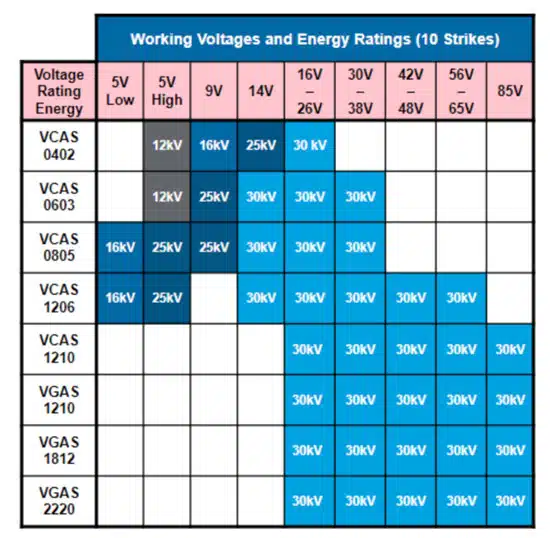This article written by Teddy Won, KYOCERA-AVX Corporation explains varistors characteristics, ESD filtering, types and how they compare with TVS diodes and provide brief varistor selection guidelines.
Varistor Characteristics
A varistor is an electronic component used to suppress transient voltages to protect electronic circuits. The behavior of varistors in a circuit is similar to TVS diodes, but they are entirely different in design, materials, and construction.
There are many kinds of varistors on the market suitable for various applications, making choosing the right one to protect a given circuit challenging.
KYOCERA AVX multilayer varistors, with a unique high-energy multilayer construction, provide state-of-the-art overvoltage circuit protection and protection from voltage transients caused by ESD, inductive switching, automotive-related transients, NEMP, lighting, etc.
KYOCERA AVX multilayer varistors also provide EMI/RFI filtering in the off-state, which can replace the need for additional EMC capacitors in the system.
A varistor is a blend of the words “varying resistor” because its resistance varies as the voltage applied to it changes. At low applied voltages, the varistor’s resistance is high, and as the applied voltage increases, the resistance decreases. They behave similarly to a Zener diode, which conducts little to no current when voltages below the breakdown voltage are applied, but a lot of current at voltages above the breakdown voltage. The difference is that varistors are bi-directional.
Multi-Layer Varistors (MLV) are a newer development in the varistor market, constructed with a multi-layer ceramic process in a surface mount package. Below the breakdown voltage, an MLV conducts little to no current but behaves like an EMC capacitor.
Above the breakdown voltage, an MLV conducts current and behaves like a transient voltage suppressor diode. These characteristics are represented in Figure 1.
In practice, an MLV is used to clamp voltage transients, as shown in Figure 2.
What is ESD
Electrostatic Discharge (ESD) is a momentary flow of electricity between two oppositely charged objects. In an ESD event, static charge built up on one object is suddenly discharged to another object when they come into contact (external), or a dielectric breaks down (internal). ESD is one type of electrical over-stress (EOS) that is a danger to electronic components and one that MLVs can help protect against.
There are various ESD event models used to describe and test electrical components. They vary by energy, pulse shape, and size. Figure 3 shows the electrical energy signatures of different ESD models, including the IEC61000-4-5 8kV model, the Charged-Device Model (CDM), the Human Body Model (HBM), and the Machine Model (MM). These are compared against the energy characteristics of an electrical surge. Knowing the target signal and energy that must be suppressed is key to designing the proper circuit protection.
MLV Varistors over TVS Diodes
There are many options for suppressing transient voltages like ESD, but the most common alternatives to MLVs are transient voltage suppressor (TVS) diodes and metal oxide varistors (MOV). MLVs, however, offer some significant advantages over these alternatives.
Compared to MLVs, TVS diodes are more susceptible to failure at higher temperatures. For the same peak power current (IPP), a physically larger TVS diode would be required at higher temperatures.
MLVs can also withstand many more strikes before failure than TVS diodes, shown in Figure 6. In this figure, Transguard is a zinc oxide (ZnO)-based ceramic MLV from KYOCERA AVX, while the SOT23 devices referenced are TVS diodes (unidirectional and bidirectional).
MLV Varistors over MOV Varistors
Metal oxide varistors (MOVs), also known as leaded disc varistors, are very common. These devices have been around for a long time and have protected many circuits, but the newer ceramic multilayer technology offers a distinct advantage.
Unlike MOVs, MLVs do not exhibit degradation against multiple strikes (if operated within electrical limits). Therefore, they can be stressed with several 100-1000 pulses with almost no impact on the electrical characteristics.
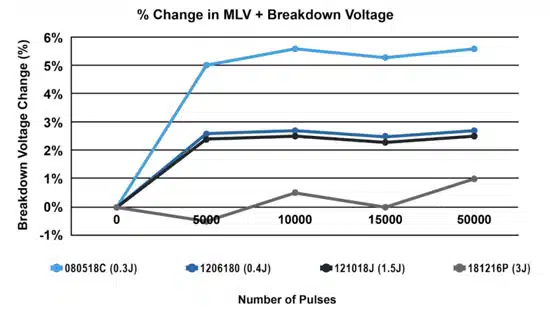
MLV Varistor Selection Guide
Selecting the right MLV solution for a circuit involves identifying the ESD energy the circuit may experience and then selecting the part that protects against that energy and that best fits into the circuit design. Figure 9 is a flowchart designed to help determine the right varistor for an application.
KYOCERA AVX multilayer varistors, with a unique high-energy multilayer construction, provide overvoltage circuit protection and protection from voltage transients caused by ESD. They also offer EMI/RFI filtering in the off-state, replacing the need for additional EMC capacitors in the system.
KYOCERA AVX MLVs are available for applications including inductive switching, automotive-related transients, NEMP, lighting, and more




















